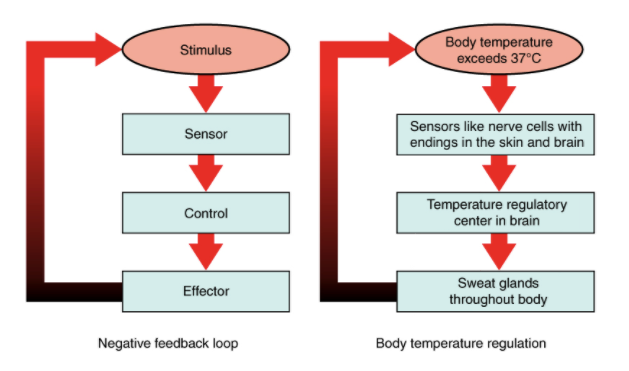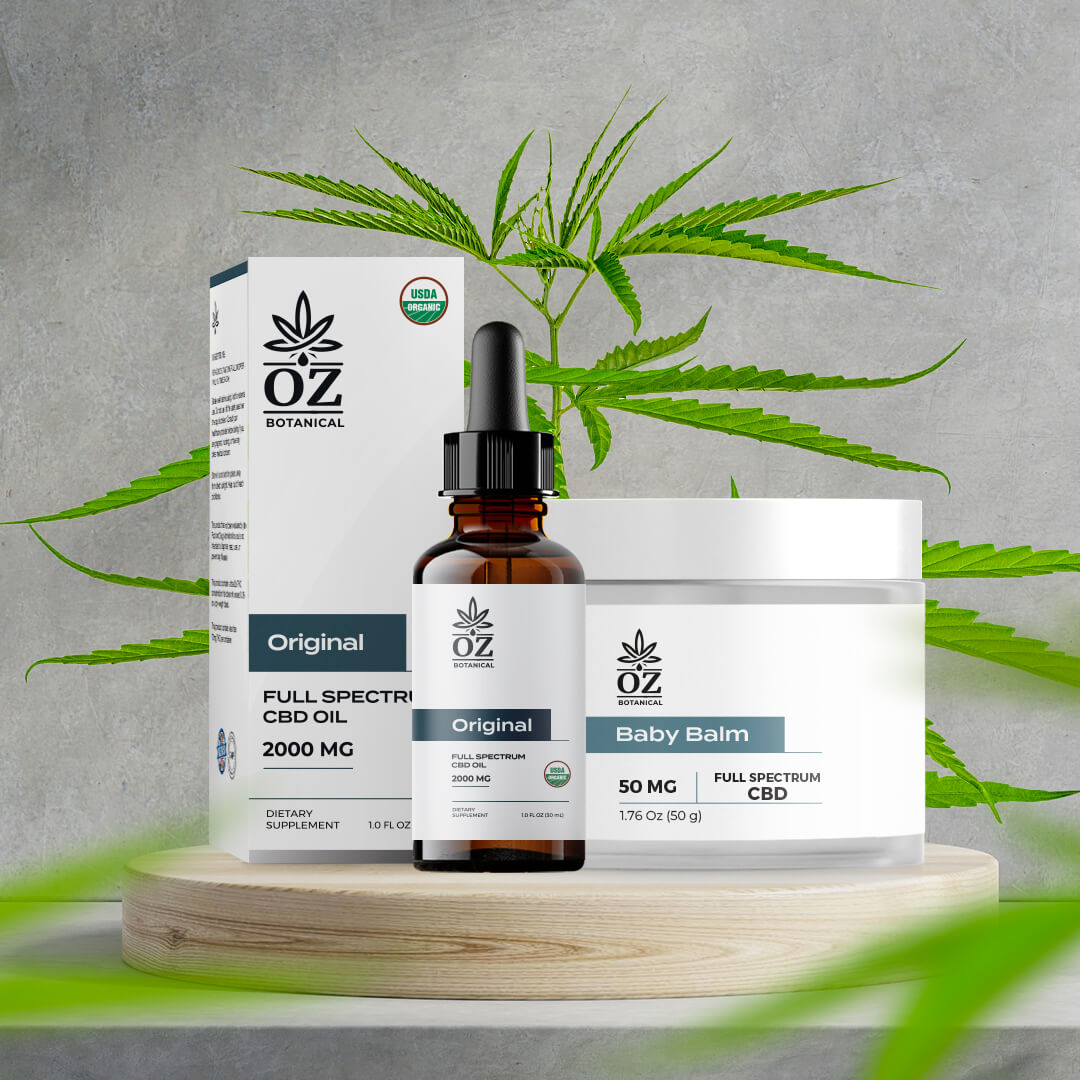SO… WHAT IS THE ENDOCANNABINOID SYSTEM?
In previous posts, we introduced you to CBD and other phytocannabinoids[1] and the consumption (delivery) methods. In the process, we briefly mentioned the Endocannabinoid System (ECS) but did not provide a detailed discussion on what it entails or its role in our wellbeing.
It took scientists a long time to discover the physiological system that allows us to experience the cannabis plant in the ways we do. They named it the Endocannabinoid System or shortly ECS, which helps humans (also many other species) reach and sustain a very essential state of equilibrium called homeostasis in the face of disturbances stemming from changes in our external environment (e.g., cold weather, sleep deprivation, stress, pain). This equilibrium happens through the implementation of different feedback loops in our body by the ECS, See Figure 1 below for an illustration of the concept and an example on thermoregulation.

Figure 1: ECS essentially operates in the form of negative feedback loops. Image adopted from Khan academy, originally modified from Homeostasis: Figure 1 by OpenStax College, Anatomy & Physiology, CC BY 4.0
The figure shows one feedback loop for one physiological process, however, as Pacher et. al. note in their seminal article, ECS has been
“increasingly implicated in a growing number of physiological functions, both in the central and peripheral nervous systems and in peripheral organs. More importantly, modulating the activity of the endocannabinoid system turned out to hold therapeutic promise in a wide range of disparate diseases and pathological conditions, ranging from mood and anxiety disorders, movement disorders such as Parkinson’s and Huntington’s disease, neuropathic pain, multiple sclerosis and spinal cord injury, to cancer, atherosclerosis, myocardial infarction, stroke, hypertension, glaucoma, obesity/metabolic syndrome, and osteoporosis, to name just a few”[2].
The systems essential parts are a set of receptors (about a dozen types) and endocannabinoids (cannabinoids that our bodies readily synthesize) along with hormones regulating the interaction of the two. There are 2 main receptor types identified in the scientific literature, cannabinoid 1 (CB1) and cannabinoid 2 (CB2). These are found in different concentrations in different parts of the body. For example, CB1 is found is found mostly in the brain, whereas CB2 receptors are densely populated in the immune system. CB1 is known to facilitate the ‘high’ we feel after THC use whereas CB2 is known to take a key role in the immune system.
Similar to other products of our evolution, endocannabinoids are designed to perfection to work with the ECS receptors. Anandamide and 2-AG are the most prominent endocannabinoids that play different roles in mood stabilization, pain, immune modulation and inflammatory relief. To describe the relationship between (endo/phyto/synthehic[3])cannabinoids and ECS receptors, some use the analogy of the relationship of a key to its lock. Apart from these keys and locks, there are also enzymes that regulate the metabolism and the break down of cannabinoids which are beyond our scope here.
Our physiologies are different from each other, therefore everybody has an ECS of their own with different capabilities or deficiencies. Cannabis consumption is considered to be one of the primary ways to address the deficiencies of an individual’s ECS. CBD products help millions of consumers in different ways and as the research advances, we find out more and more about the mechanisms of that help within the ECS. With this post, we wanted to introduce you to the concepts of ECS and homeostasis, and briefly describe the components of this system essential to our survival and wellbeing.
Stay tuned to OZ Academy for more informative content!
[1] Cannabinoids that occur naturally in the cannabis plant.
[2] Pacher, Pál et al. “The endocannabinoid system as an emerging target of pharmacotherapy.” Pharmacological reviews vol. 58,3 (2006): 389-462. doi:10.1124/pr.58.3.2
[3] Synthethic cannabinoids, as the name implies, are created in a lab synthetically.








